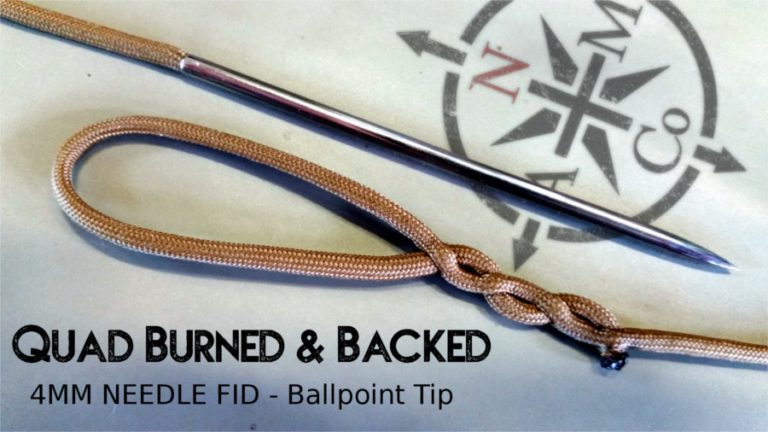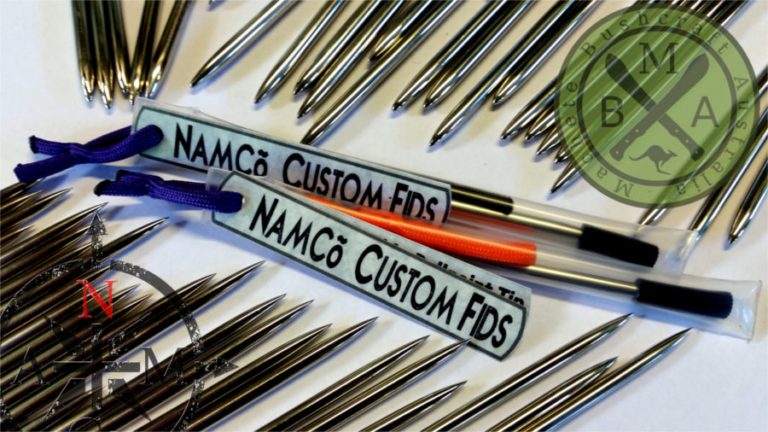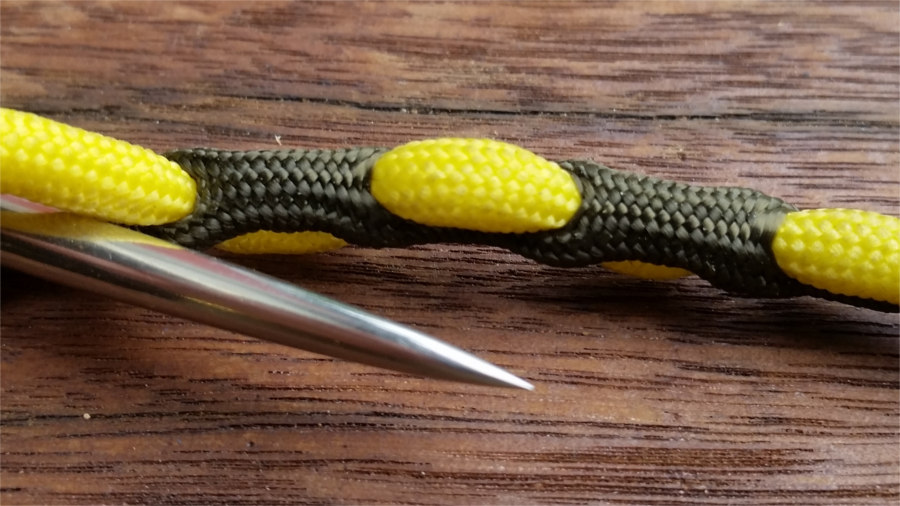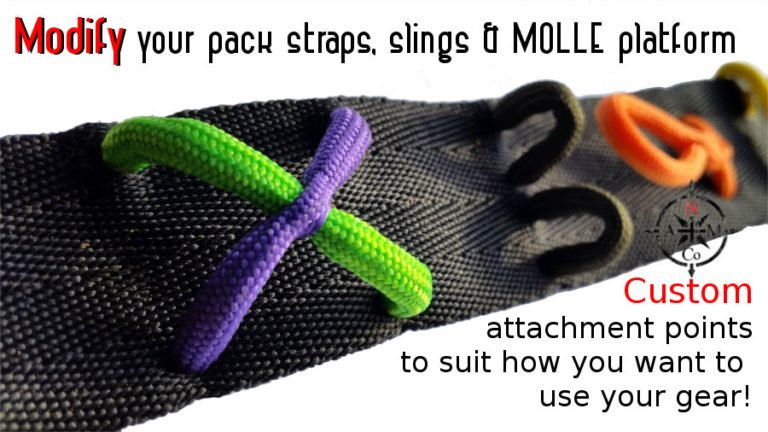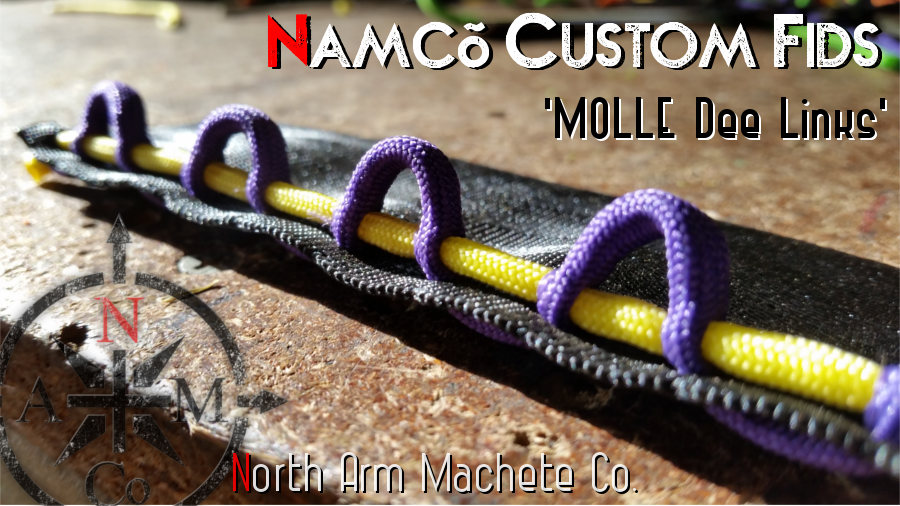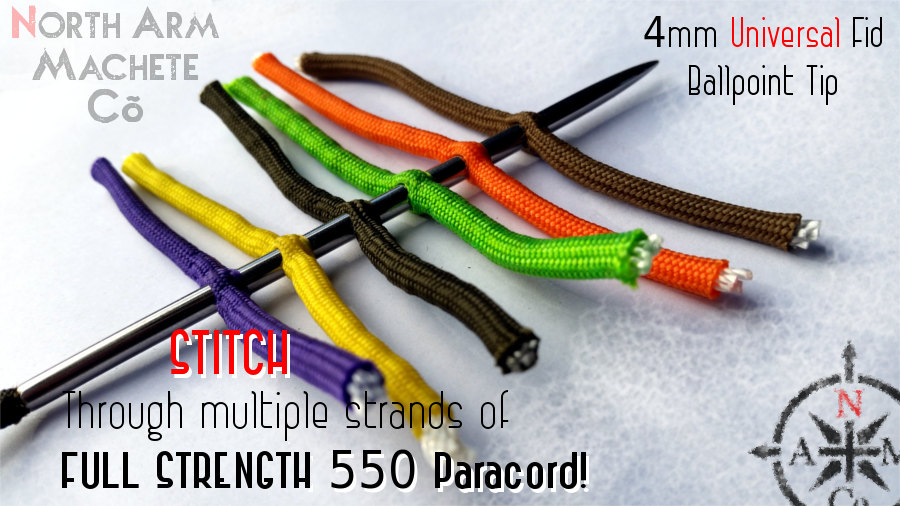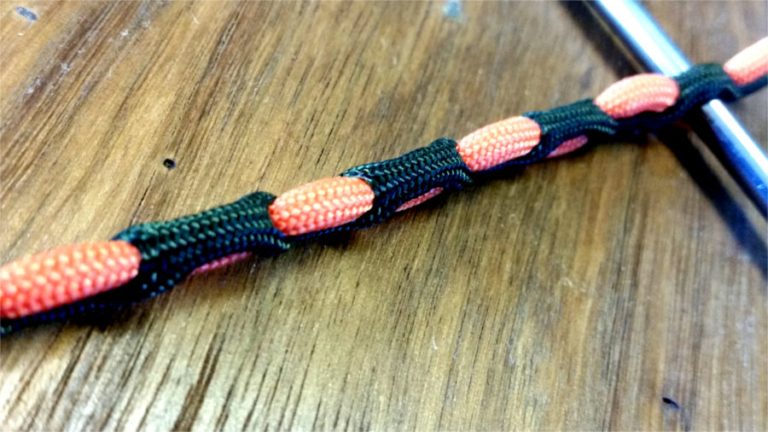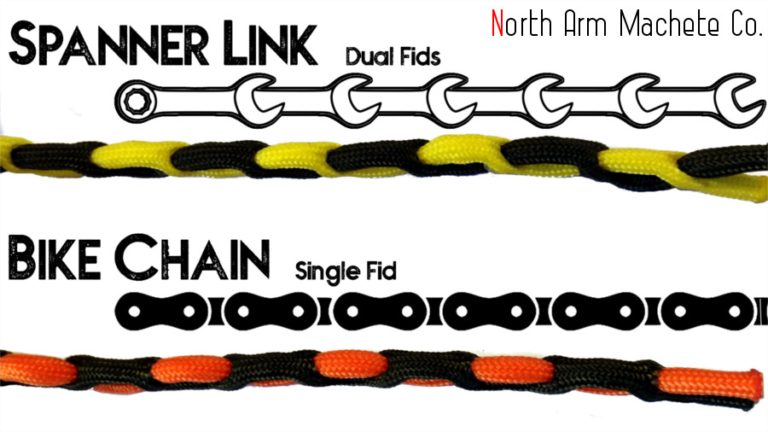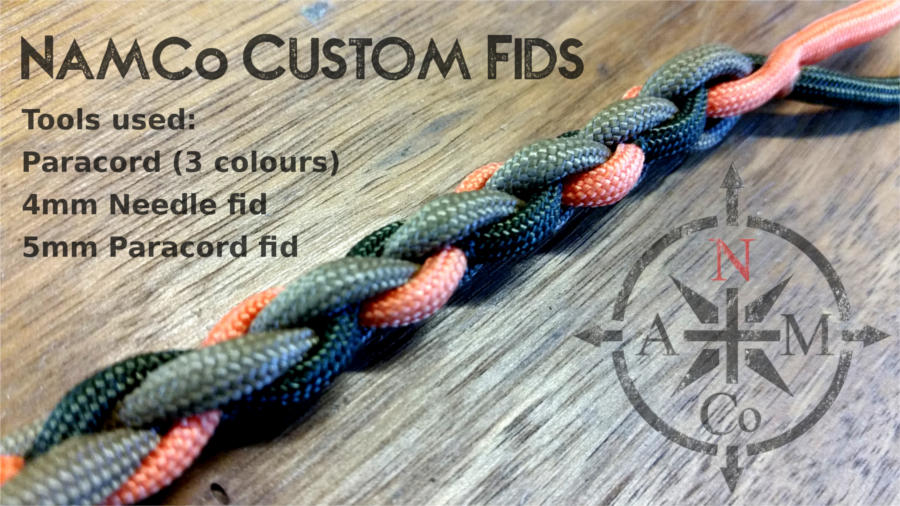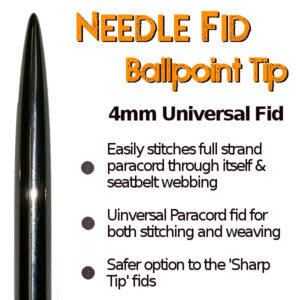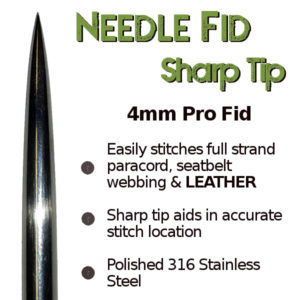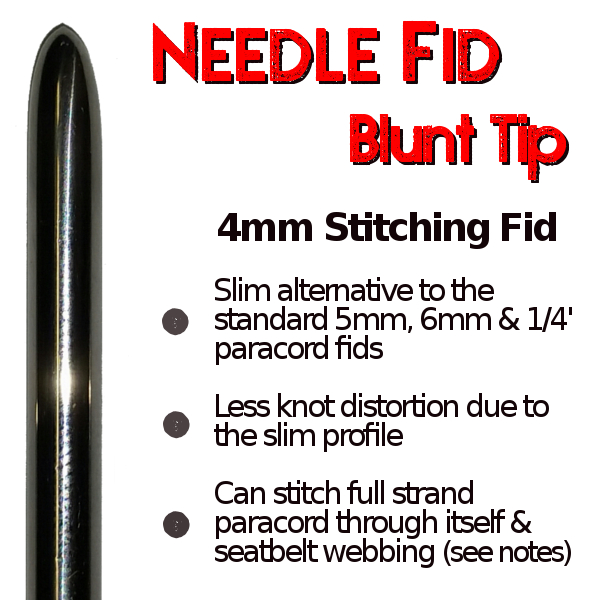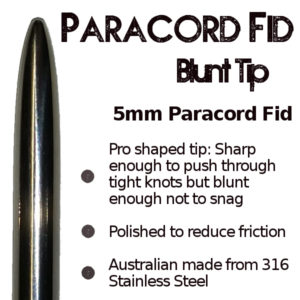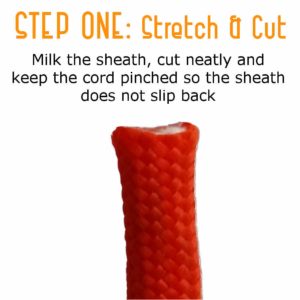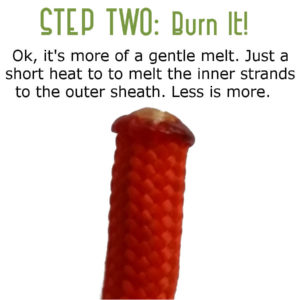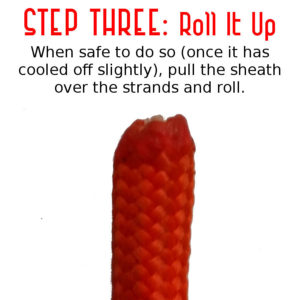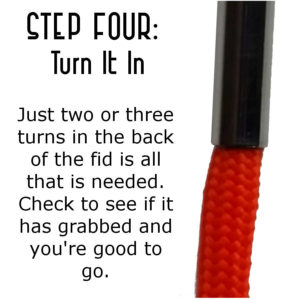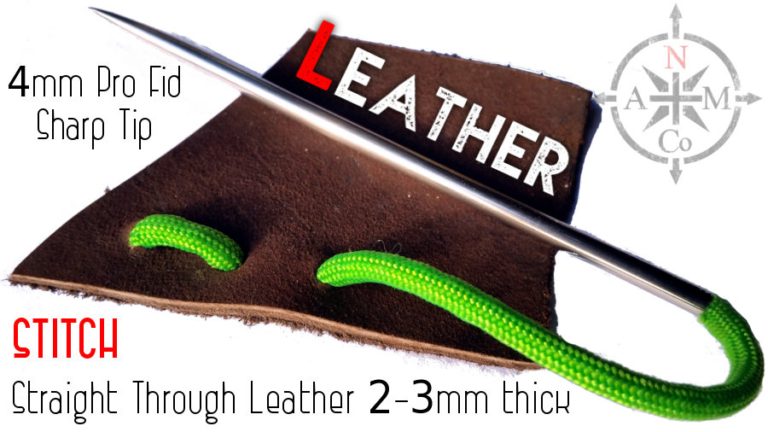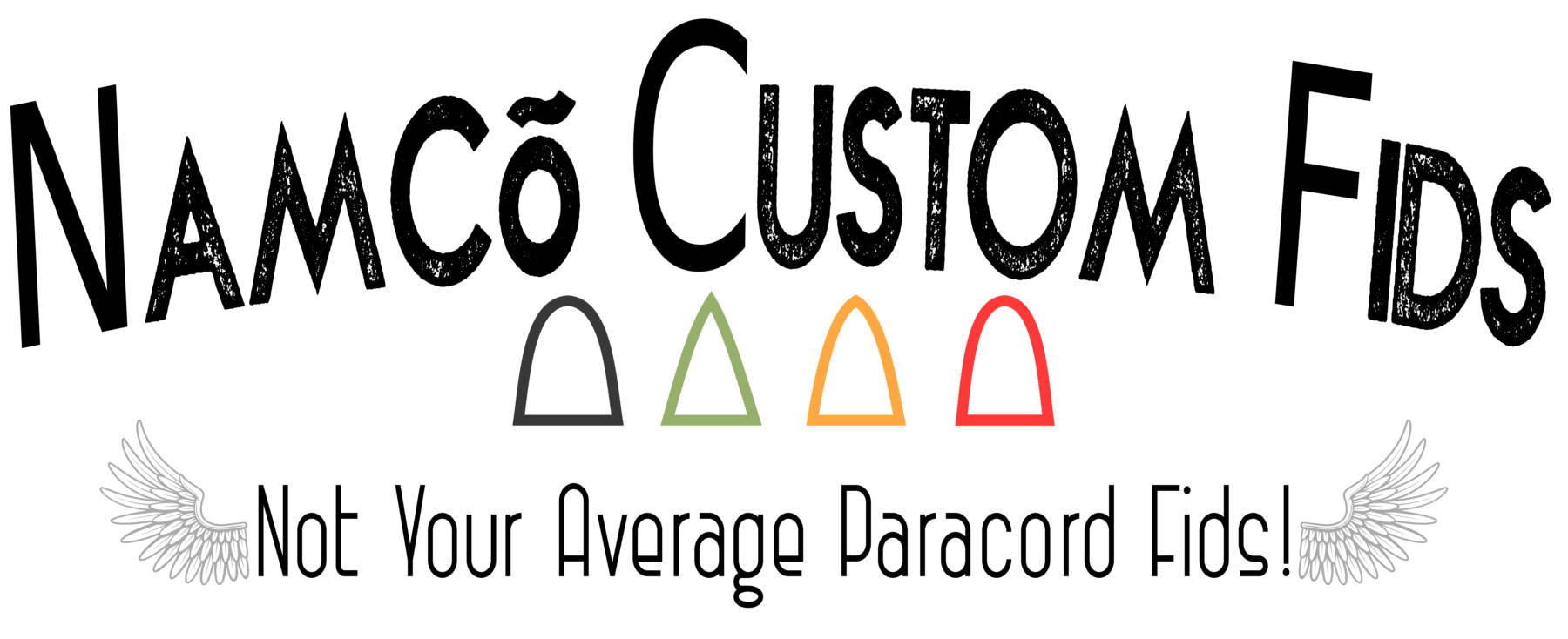
Want to easily stitch full strand 550 paracord through leather, seatbelt webbing, canvas and more?
How about stitching full strand paracord through itself making load bearing Eye Splices?
You may want to take a look at these NAMCo Custom Paracord Fids if you're after a whole lot more from your paracord.
What can these unique fids do with paracord?
Easily make slim line, load carrying eye splices.
Unique stitch through, full strand paracord braids.
Stitch through leather, canvas, seatbelt webbing, multiple full strand paracord lines and more.
Custom carry rigs.
Tool handle wraps.
Personalising your MOLLE platform and bag straps to really suit how you want to use it...
and much, much more!
There is a huge scope for customising your own gear when you can stitch full strand paracord through itself, and at the same time stitch paracord through MOLLE webbing, canvas, leather, seatbelt webbing etc.
Easily customise and add to your MOLLE platform making it fit the way you want to use it!
Click the pictures below for a link to the Paracord Fid Shop!
 4mm Needle Fid – Ballpoint Tip
4mm Needle Fid – Ballpoint Tip
We call this the Universal Paracord Fid. It can stitch through full strand paracord, webbing, canvas as well as be used as a general purpose paracord knitting and weaving fid. You can stitch through multiple strands of paracord as well as multiple stacks of fabric or webbing.
Due to it having a less pointy tip (very fine Ballpoint size), it is a safer alternative to the Sharp Tip fid.
Although both the 'Sharp Tip' & 'Blunt Tip' fids have their advantages, If you were only interested in one fid, this Universal Paracord Fid would be my pick.
 4mm Needle Fid – Sharp Tip
4mm Needle Fid – Sharp Tip
Now this is my favourite, we call it the 'Pro Fid'. It can stitch through full strand paracord, webbing, canvas and even leather!!!
Due to the really pointy tip, polished finish and long tapered sides, it excels in a few important areas:
-
You can pass it through tightly packed fibres that are caused by being close to another stitch
-
You can accurately and easily locate your stitches with the pointy tip
-
It can push through leather and stiff webbing material far easier than the other fids
Why do we call it the PRO FID? Apart from it's improved abilities with stitching, the sharp tip makes it a safety issue. Originally we were not going to release the sharp tip version but due to it being so useful, we decided to let you all choose if you were prepared to take on the responsibilities and outcomes that come with it. See the extra SAFETY paragraph at the bottom of this page.
On a side note, this fid has become my most favoured splinter removal needle. Due to it being so easy to manipulate, I find it gets the splinters out in to time at all.
 4mm Needle Fid – Blunt Tip
4mm Needle Fid – Blunt Tip
This is a great alternative to the standard 5mm & 6mm paracord fids that are already on the market and it has a few key advantages:
-
It's slimmer so it will glide through the really tight knots on the most complex braids.
-
It is very blunt but polished so it won't snag on the paracord when you pass the tip through.
-
It can stitch paracord through seatbelt webbing.
-
Due to the combination of the polish and being only 4mm, it can also stitch through full strand paracord but, it is no where near as easy as the Sharp and Ballpoint fids. It just gets over the line to be honest, but it is nice to know it has that capability.
 5mm Paracord Fid- Blunt Tip
5mm Paracord Fid- Blunt Tip
Our fid is a big improvement over the standard 5mm paracord fids already in the market so we decided to include it for the fans. First up it's polished, and that is not for aesthetic reasons. Although it looks sexy, when you're forcing fids through tight knots, friction makes all the difference. We made sure the tip design was just right. If it is too pointy, it can snag on the paracord. If it is too blunt, you can't force it through seat belt webbing.
Yep, that's right, If the tip design is just right and it is polished, you can push a 5mm fid through seatbelt webbing.
We drilled and tapped these 5mm fids in the standard M4 thread pattern. There is no need for complicated methods in trying to get the paracord to fit in these fids. Just cut square, melt so the ball is larger than the sheath and gently roll the melt when it is cool enough.
So what makes these NAMCo Custom Paracord Fids different?
Well, you can easily stitch full strand paracord through itself as well as many other materials (That's a huge bonus be honest!). It's the focus on using 4mm Stainless Steel and the polish that sets these fids apart from the pack. We take special care in hand shaping each and every tip to make sure it will perform everywhere it counts. Our custom fids being so slim, opens up the door to using the fid like a sewing needle and the full strand paracord as it's line. This really opens up the creative possibilities with paracord.
The generic fids in the market are mostly made from 5mm, 6mm and .250 inch rod stock. Most of what we have seen are not even polished, just roughly shaped straight off the grinder.
Now did we mention these fids are shiny? The second reason these fids are so effective is that they are polished to the point where the friction is minimal (They are eye catching with a polish but please see the notes below). This has a huge advantage as you can use the fids to stitch through tightly packed materials like seatbelt webbing, leather and of course, full strand paracord. Being able to stitch paracord through (itself and other lines) gives you a load carrying and slim line method to adding an eye splice to the end of your line... Pretty cool hey!!
OK, so here is some extra important information!
What are fids made from?
All the fids are made from 316 and 304 Stainless Steel depending on availability (we preference 316 as it is easier to machine). Currently all our fids are 105mm (+/- 3mm) long.
How do I install the 550 paracord in the back of the slim, 4mm needle fids?
It's a Slim fid, so it's going to be a smaller hole than the standard 5mm fids. Don't worry, it is more than manageable once you get the hang of it. I aim to get the melted outer sheath to pull over the front the melted internal strands. The melt needs to be a little smaller than the paracord. The best method I have come up is as follows:
-
Milk the sheath between thumb and forefinger to straighten the paracord. This shrinks the sheath slightly
-
With a sharp knife or sharp scissors, cut the end square and neat. I pinch the cord behind the cut so the sheath and internal strands stay together once cut
-
I melt the flat face with a lighter. I'm aiming to melt both the internal strands and outer sheath
-
When cool enough and while the melt is still soft, I pull the melted part of the outer sheath over to cover the internal strands and roll between my fingers.
-
To load the paracord into the fid, only two to three full turns are needed in the back of the fid to secure the line.
Do you provide instructions?
We don't provide instructions but if you're buying these as a gift, let us know. We will stitch an eye splice on the end of the paracord (we test every single needle anyway, we can just leave the paracord attached) so your gift can do the talking for you! We also include links back to this page for a better description of what these fids can achieve. We will add in some links to an Instructables and a youtube clip once we have them.
How polished are the fids?
They look and feel the part when they are polished but it's not for cosmetic reasons. It is to reduce the friction as much as possible. There will be some abrasive marks in all the fids that you can see if you catch the light just right but all the high points will be nice and shiny. Although we are fussy about the products we make (we hand test every single one before we ship!), these scratch marks are normal and don't effect the fids in use.
You mention MOLLE modifications?
Due to these fids being slim, polished and pointy, they will pass through webbing easily and pull full strand paracord through it in the process. With a bit of creative thinking, you can make custom paracord attachment points for your gear. You can even stitch a pouch directly to the MOLLE platform. There are limits and you will need to experiment (Like the MOLLE Dee Links, I made that up on the spot). Our fids are long so if you can grab the MOLLE and twist it slightly, you will be able to angle the needle through the webbing. You can also make your own custom mounting plates from seatbelt webbing and attach it to your bag as a work around.
How do I secure the paracord once I have stitched it through webbing?
For light weight attachment points, simply cutting the paracord and melting it into a ball provides a sturdy way of terminating the stitch through the webbing. For a really strong hold, leave the tails long and stitch one tail directly through the other. Cut and melt it past the stitch. If you want to go overboard, use two needle fids and do a Locked Spanner Link stitch.
You can stitch through leather!?
With the 4mm Sharp Tip Fid, Yes you can, and not just thin and flimsy leather. There are limits to what you can push through though. Once you get above about 3mm thick in the harder leather, it gets tough to just push the 'Sharp Fid' through without first punching a hole. You can also use the Ballpoint and Blunt Tip fids for leather but you will need to punch or cut a hole first.
Safety with sharp fids and melting paracord!
You will need to use your own judgement on this. Even though I choose to use these fids without gloves, we state that appropriate safety gloves are essential (They make stab proof work gloves but you need to do your own research) when using these fids. You will also need a Stitching Horse (Leather craft clamp that holds the leather/paracord/webbing while you stitch). They are indispensable tools that free up both your hands for stitching and allow you to keep your hands away from the direction the fids are travelling.
All paracord fids (that we know of) require you to melt the end of the cord to shape it (between fingers) so it can be easily screwed into the back of the fid. Our slim fids are no different.
The Sharp Tip and Ballpoint fids pose an extra safety risk as you're essentially forcing a big sharp needle through tough materials. If you're new to working with sharp stitching tools, look up 'leather work stitching with a Stitching Awl and Stitching Horse'. It will serve as a good place to start your own research into this style of craft work. As we don't know your level of ability when working with sharp hand tools, if you choose to purchase and use these fids, You are taking on all the possible outcomes (financial or otherwise), not us at NAMCo!

